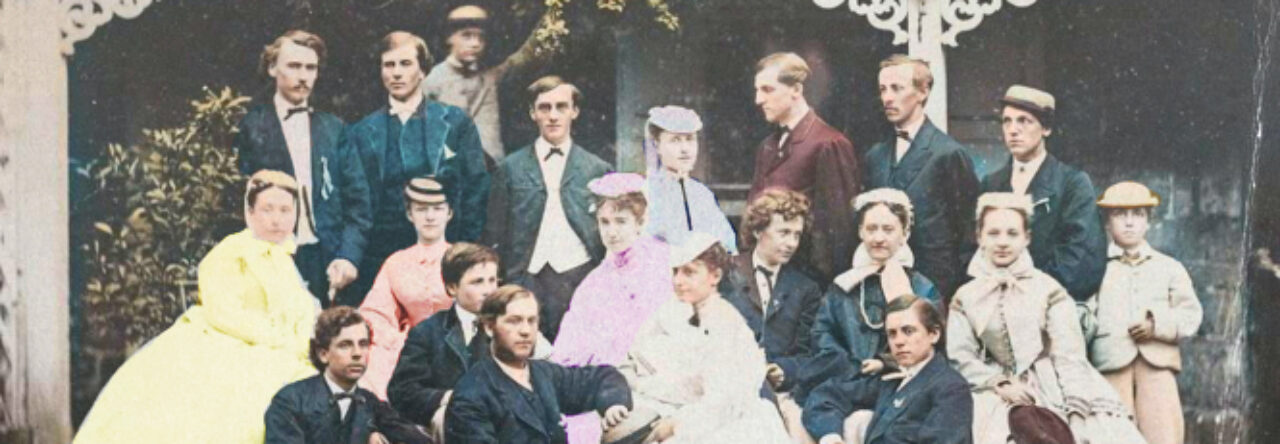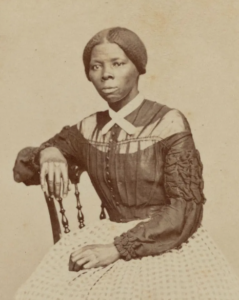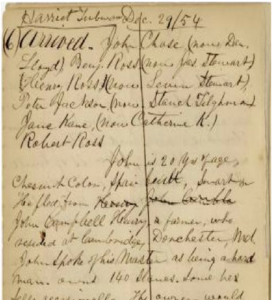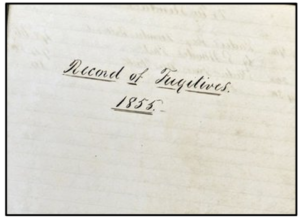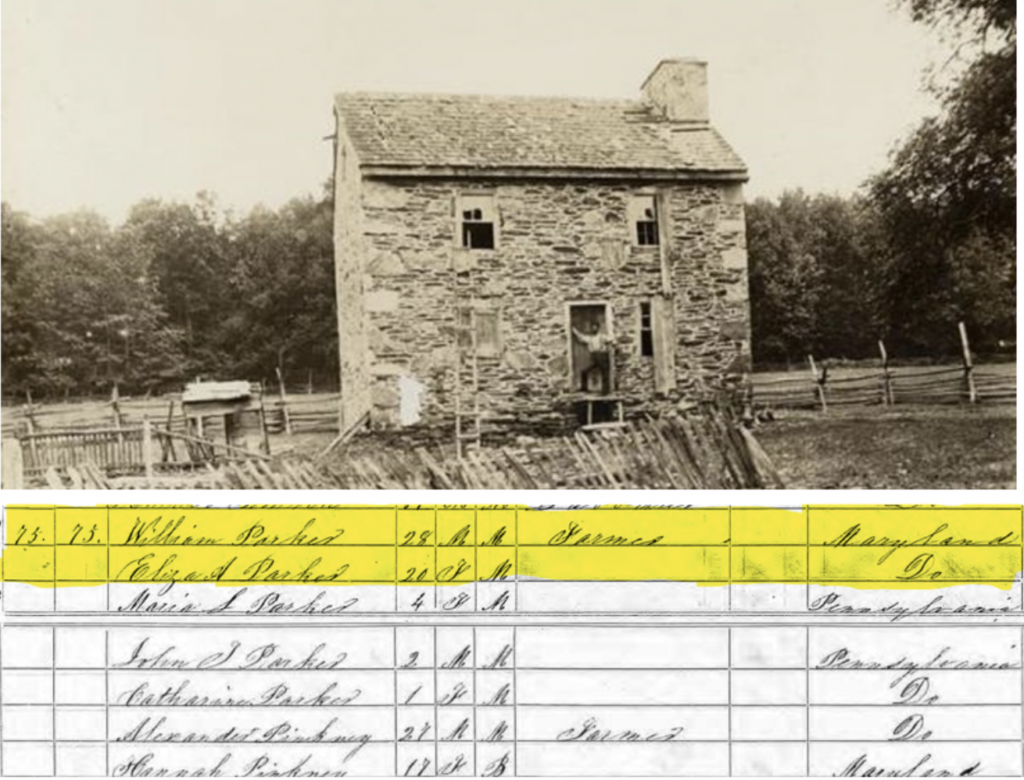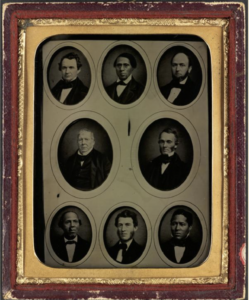1854: Case Study in Turning Points
For full narrative, see this post at the stampedes project blog
Slave Stampedes: Case Study in Mapping
Dec 1845: Harriet Tubman Case Study
Thomas Garrett to James Miller McKim, Dec. 29, 1854
ESTEEMED FRIEND: We made arrangements last night, and sent away Harriet Tubman, with six men and one woman to Allen Agnew’s, to be forwarded across the country to the city. Harriet, and one of the men had worn their shoes off their feet, and I gave them two dollars to help fit them out, and directed a carriage to be hired at my expense, to take them out, but do not yet know the expense. I now have two more from the lowest county in Maryland, on the Peninsula, upwards of one hundred miles. I will try to get one of our trusty colored men to take them to-morrow morning to the Anti-slavery office. You can then pass them on. // THOMAS GARRETT [WILMINGTON, DE]
William Still’s vigilance journal, December 29, 1854
Harriet Tubman Dec. 29/54
(6) Arrived [PHILADELPHIA] John Chase, (now Dan. Lloyd), Benj. Ross (now Jas. Stewart) Henry Ross, (now Lewis Stewart), Peter Jackson, (now Stanch Tilghman) Jane Kane, (now Catherine K.) Robert Ross John is 20 yrs of age, chesnut color, spair built, Smart &c He fled from John Campbell Henry, a farmer, who resided at Cambridge, Dorchester, Md. John spoke of his master as being a hard man_ owns 140 slaves. Some he sells, occasionally_ The owner would not allow John to Seek his own master_ this was the cause of his escape Left behind mother, Bro’s, & sisters, all slaves. Benj. Is 28 yrs of age, chesnut color, medium size, intelligent &c He was owned by Eliza Ann Brodius [BRODESS]_ lived near Bucktown, Cambridge Md. The Mistress was discribed as being “very Devilish.”_ Three slaves finding It difficult to support a family of 8 (whites) they had come to the conclusion to escape to save themselves from being sold. had been threatened.
Sydney Howard Gay’s Record of Fugitives (1855-56)
[NEW YORK CITY, May 1856] Harriett Tubman seven years ago was [the] slave of Edward Brodhurst [BRODESS] of Bucktown, Md. Her master dying, [the] estate to be settled, + two of her sisters having been sold into a ‘chain-gang,’ she determined to run away. She did so, + made her way to Canada…. At Christmas [1854] she returned again for her brothers. Their term of service with [the] lumberman had expired. At Christmas they were to have been sold. On Christmas eve. 1854. she + they left for Canada, where they soon after arrived safely.
Christiana Riot: Case study in History & Memory
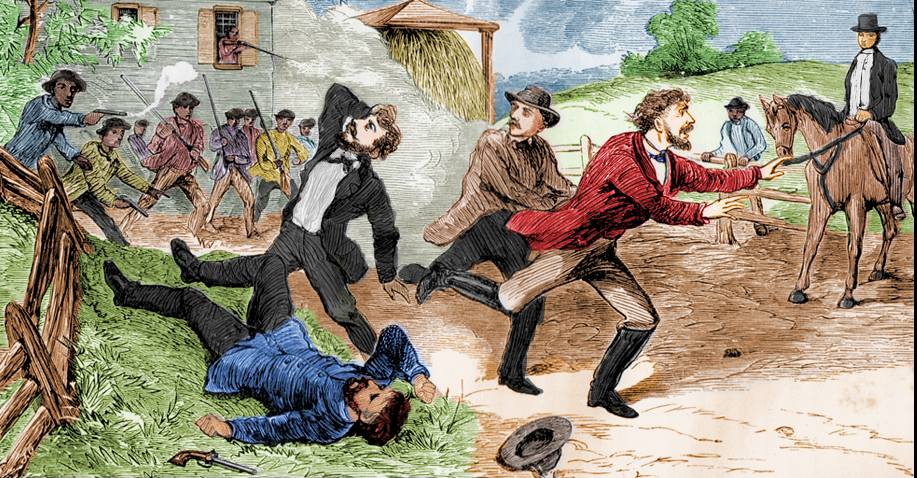
Christiana (1851), orig. by John Osler, colorized by Gabe Pinsker (House Divided Project)

Eliza Parker’s original horn, Christiana, PA (courtesy of Christiana Historical Society; photo by Aiden Pinsker)
Below: interview with Michele Parker Samuels, descendant of William and Eliza Parker, conducted April 2021 by Aiden Pinsker
For more information on William Parker’s mysterious later life, see this research post
UGRR: Case Study in Defining Terms
Proposed textbook-style paragraph:
The Underground Railroad was a metaphor used by antislavery activists to describe and publicize efforts at helping runaway slaves during the years before the Civil War. While secrecy was essential for particular operations, the movement to help fugitives was no secret at all. Northern Underground Railroad operatives were often openly defiant of federal statutes designed to help recapture runaways. Agents used state personal liberty laws, which aimed to protect free black residents from kidnapping, as a way to justify their fugitive work. Vigilance committees in northern cities such as Philadelphia, New York, Boston and Detroit formed the organized core of this effort. These committees often worked together and provided legal, financial and physical protection to black people threatened by kidnappers or slave-catchers. Notable vigilance leaders included black men such as William Still in Philadelphia, David Ruggles in New York, Lewis Hayden in Boston and George DeBaptiste in Detroit. There were also thousands of other individuals, often white and usually motivated by religious belief, who helped fugitives during the antebellum period. Though most of these Underground Railroad figures operated with relative impunity in the North and across Canada, southern operatives faced grave dangers and thus maintained a much lower profile. This is one reason why Harriet Tubman, an escaped slave herself, was such a courageous figure. Her repeated rescues inside the slave state of Maryland during the 1850s became the basis for her legendary post-war reputation as “Moses.” Though Underground Railroad agents such as Tubman freed only a fraction of the nation’s slaves (probably no more than several hundred each year out of an enslaved population of millions), the widespread reports about their actions infuriated southern political leaders and helped bring about the Civil War and the end of slavery in the United States. (300 words)
